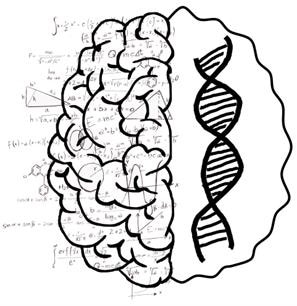According to a study published in the open-access journal PLOS Biology on October 22nd, 2020, DNA variation in a gene, known as ROBO1, is linked to early anatomical variations in a region of the brain that plays a crucial role in quantity representation, possibly describing how genetic variation may shape children’s mathematical performance.

DNA variation in a gene called ROBO1 is associated with early anatomical differences in a brain region that plays a key role in quantity representation, potentially explaining how genetic variability might shape mathematical performance in children, according to a study published October 22nd in the open-access journal PLOS Biology by Michael Skeide of the Max Planck Institute for Human Cognitive and Brain Sciences, and colleagues. Image Credit: Michael A. Skeide, 2020.
The study was reported by Michael Skeide from the Max Planck Institute for Human Cognitive and Brain Sciences, and collaborators.
In particular, the authors observed that genetic variants of ROBO1 in young children are linked to the volume of grey matter in the right parietal cortex, which consequently estimates the scores of the mathematical test in second grade.
It is known that mathematical ability is heritable and associated with many genes that play a vital role in the development of the brain. However, scientists were not clear how math-related genes might shape the development of the human brain.
Consequently, it is an open question on how genetic differences could lead to discrepancies in mathematical ability. Hence, to bridge this knowledge gap, Skeide and his colleagues integrated genotyping with brain imaging in unschooled kids without any mathematical training.
The study’s authors examined a total of 18 single nucleotide polymorphisms (SNPs)—genetic variants that affect a single building block of DNA—in 10 genes that were earlier implicated in mathematical performance.
The authors then investigated the association between these genetic variants and the amount of grey matter (which is mainly made up of nerve cell bodies) across the entire brain in a total of 178 three- to six-year-old kids who were subjected to magnetic resonance imaging. Eventually, the researchers spotted brain regions whose volumes of grey matter could estimate the scores of the math test in second grade.
The team discovered that variants in the ROBO1 gene that controls the prenatal growth of the outermost layer of neural tissue found in the brain are linked to the volume of grey matter in the right parietal cortex—a critical brain area for quantity representation.
Furthermore, the volume of grey matter located inside these regions predicted the math test scores of the children aged seven to nine years.
According to the study’s authors, the outcomes imply that genetic variability might sculpt the children’s mathematical ability by controlling the early development of the basic quantity processing system of the brain.
Source:
Journal reference:
Skeide, M. A., et al. (2020) Neurobiological origins of individual differences in mathematical ability. PLOS Biology. doi.org/10.1371/journal.pbio.3000871.